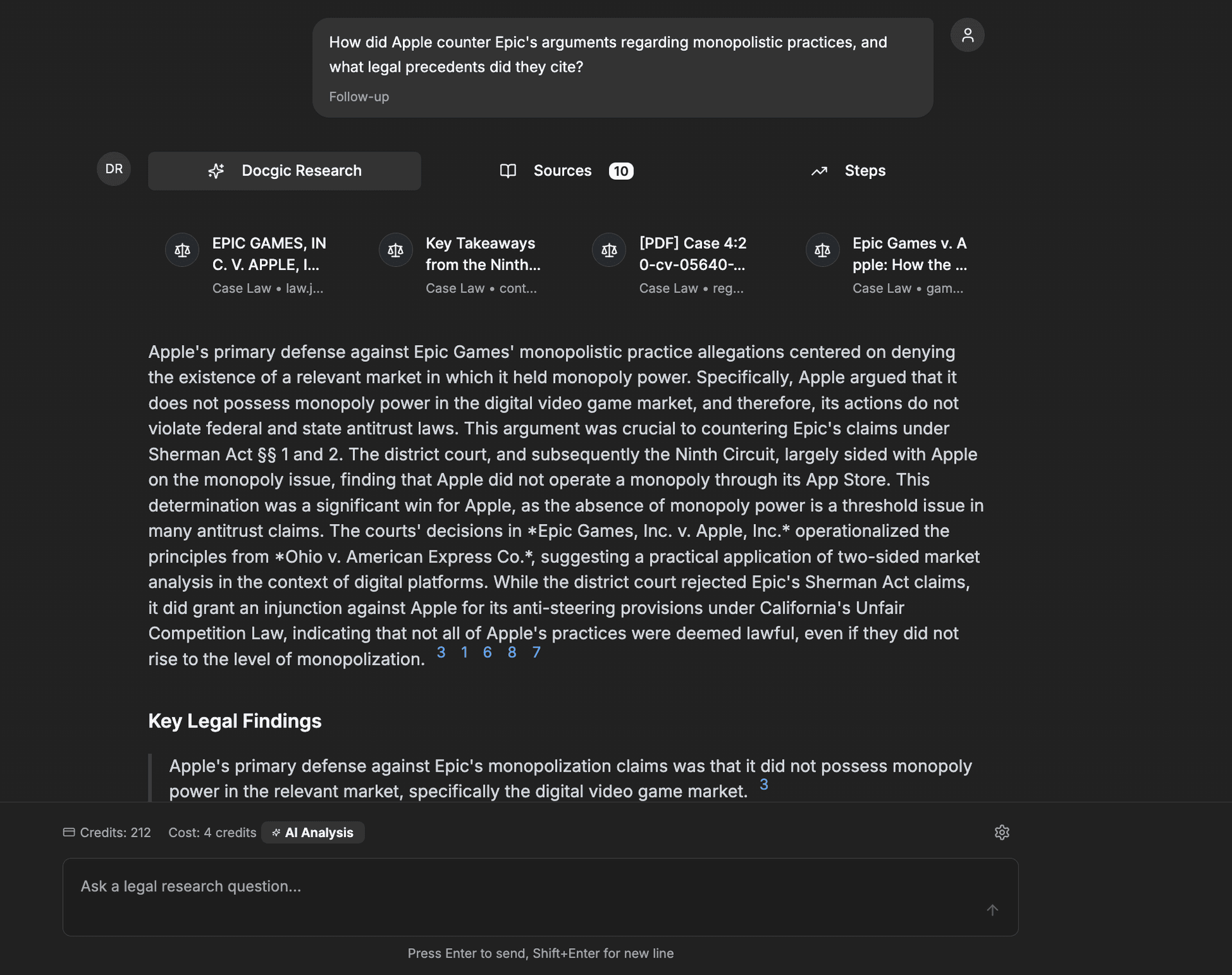FREE: The "Contract Killer" That Reads 200-Page Agreements In 30 Seconds(While You Get Paid $500/Hour To "Review" Them)
Upload ANY contract → Get bulletproof analysis in 30 seconds → Bill full rate while AI does the work.
Document review that doesn't ruin your weekend
While your competition burns through associates, you'll be closing deals. 85% faster reviews, 90% fewer errors, 100% more billable hours.
Legal research at light speed
Skip Westlaw rabbit holes. Get comprehensive research with sources and analysis in seconds, not hours.
Instant Case Law Research
Ask any legal question and get comprehensive analysis with relevant cases, statutes, and regulations cited.
Synthesis & Analysis
Don't just get a list of cases. Get actual analysis that connects the dots and builds your argument.
Current Law Updates
Ask questions like "What stands out in this section?" and get citation-backed answers.

Chat with your contracts (they finally talk back)
Ask questions like a human. Get answers like Westlaw, without the migraines.
Understands your contract language
Our AI understands legal terminology and concepts like force majeure, indemnification, and material adverse change clauses.
Citation-Backed Answers
Every answer comes with direct references to specific sections, so you can verify and cite with confidence.
Cross-Document Analysis
Find inconsistencies between contracts or track changes across versions of the same agreement.

Redlines you can trust
Track changes like a bloodhound. Never miss a sneaky edit again.
Never Miss a Client's Change
Automatic version tracking ensures you catch every modification in contracts, eliminating costly oversights.
Spot Risky Modifications
Our visual highlighting makes problematic changes obvious, even in complex legal documents with hundreds of revisions.

Document Research Integration
Automatically detect and enrich citations with metadata from trusted databases.
- Automatic citation detection
- Citation enrichment
- Comprehensive case information
Advanced Analytics
Gain insights into your document analysis patterns and track your legal workflow efficiency.
- Document analysis insights
- Workflow efficiency tracking
- Performance benchmarking
Legal-Grade Security
Designed for law firms with client confidentiality requirements and strict data governance needs.
- Attorney-client privilege compliant
- Per-client document isolation
- Audit trails for all document access
Pricing that won't bankrupt your practice
No complicated billing. No surprise charges. Just pay for what you use and get back to lawyering.
🎓 Law Student
FREE
Perfect for legal education
- Document analysis
- Chat with documents
- Legal research
- Document comparison
- Case law search
- Document organization
⚖️ Lawyer
$29.99
For practicing attorneys
- Advanced document analysis
- Enhanced document comparison
- Precedent analysis
- Deposition analysis
- Priority support
🏢 Law Firm
$99.99
For law firms & organizations
- All Lawyer features
- Custom integrations
- Extended data retention
- Dedicated support
- Enterprise-grade security
How Docgic Works
Get started with Docgic in just a few simple steps.
Upload Documents
Upload your documents to our secure platform. We support various formats including PDF, DOCX, and more.
AI Analysis
Our AI automatically analyzes your documents, extracting key information, identifying clauses, and preparing them for interaction.
Analyze & Export
Chat with your documents, compare versions, generate detailed reports, and export your findings in various formats.
Ready to Transform Your Document Workflow?
Join the professionals who are saving time and gaining insights with Docgic.
Connect with the Creator
Have questions or feedback? Let's connect on social media.
Have feedback or questions?

